Jaune Quick-to-See Smith
Memory Map
19 Apr - 13 Aug 2023
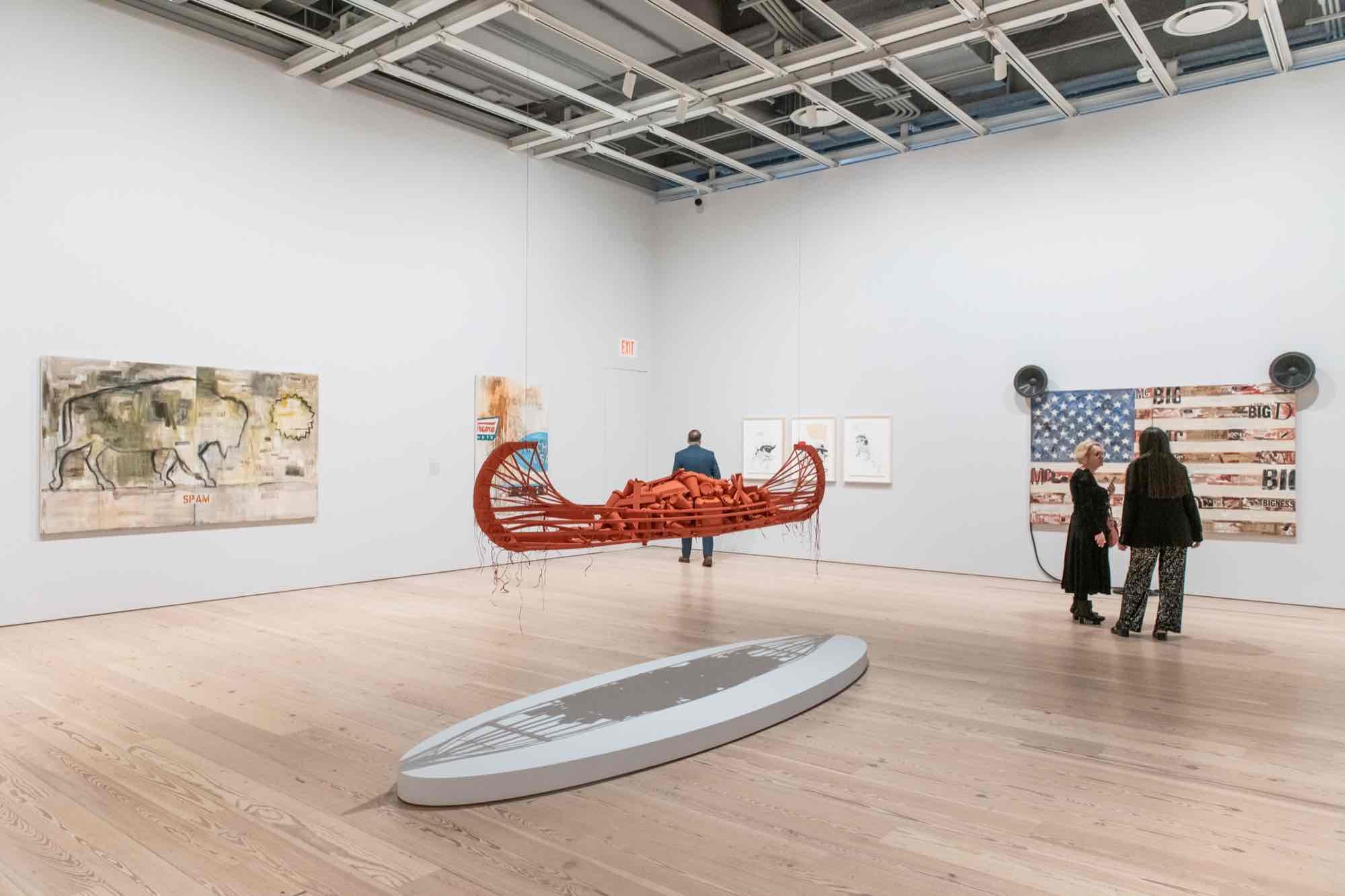
Installation view of Jaune Quick-to-See Smith: Memory Map (Whitney Museum of
American Art, New York, April 19–August 13, 2023). Left to right: Spam, 1995; The
Rancher, 2002; Jaune Quick-to-See Smith and Neal Ambrose-Smith, Trade Canoe:
Making Medicine, 2018; Tonto and the Lone Ranger Series: One Day, I Will Be
Discovered, 2002; Tonto and the Lone Ranger Series: No Comment!, 2002; Tonto
and the Lone Ranger Series: Not!, 2002; McFlag, 1996. Photograph by Matthew Carasella
American Art, New York, April 19–August 13, 2023). Left to right: Spam, 1995; The
Rancher, 2002; Jaune Quick-to-See Smith and Neal Ambrose-Smith, Trade Canoe:
Making Medicine, 2018; Tonto and the Lone Ranger Series: One Day, I Will Be
Discovered, 2002; Tonto and the Lone Ranger Series: No Comment!, 2002; Tonto
and the Lone Ranger Series: Not!, 2002; McFlag, 1996. Photograph by Matthew Carasella
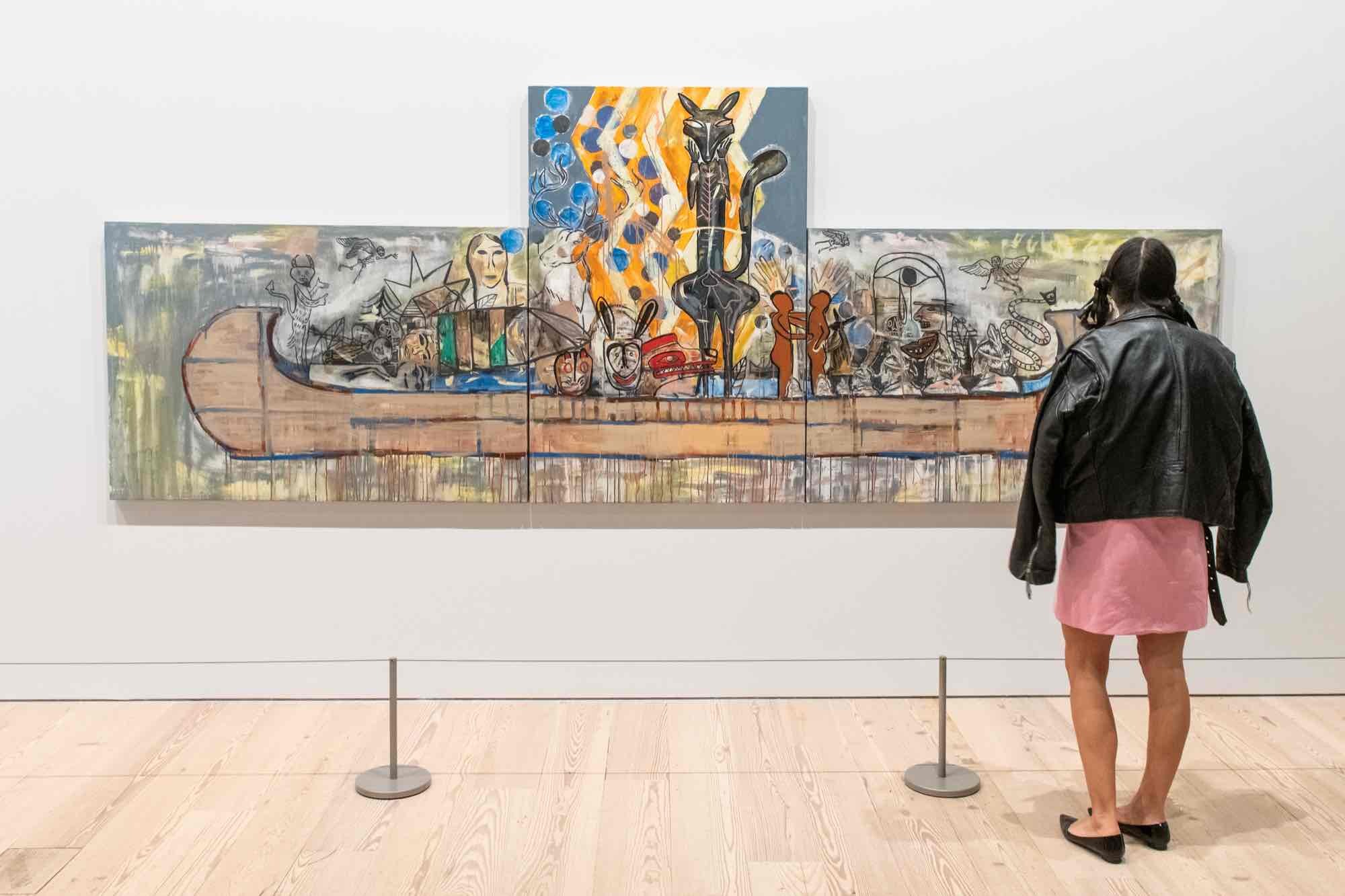
Installation view of Jaune Quick-to-See Smith: Memory Map (Whitney Museum of
American Art, New York, April 19–August 13, 2023). Trade Canoe: Forty Days and
Forty Nights, 2015. Photograph by Matthew Carasella
American Art, New York, April 19–August 13, 2023). Trade Canoe: Forty Days and
Forty Nights, 2015. Photograph by Matthew Carasella
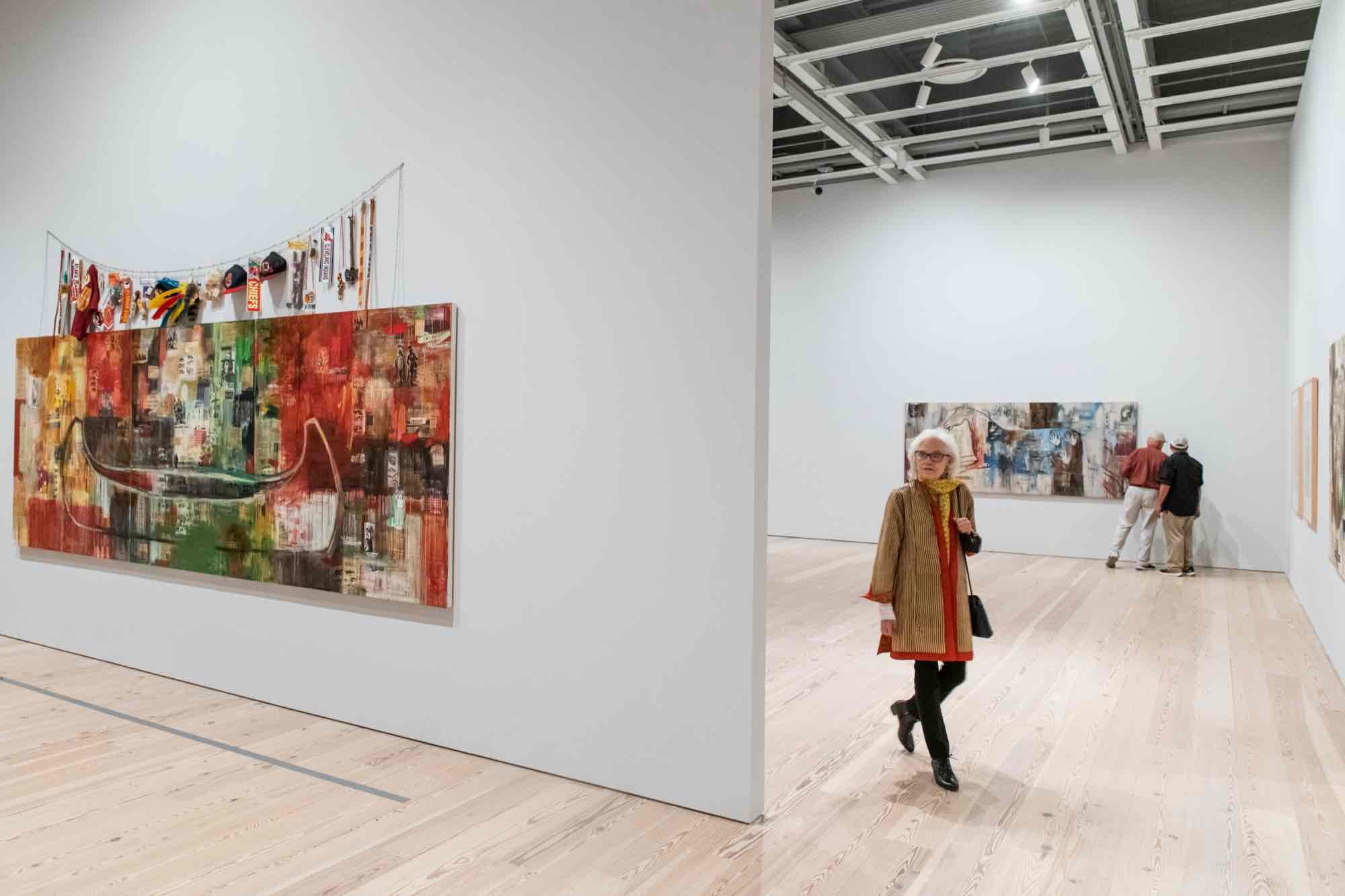
Installation view of Jaune Quick-to-See Smith: Memory Map (Whitney Museum of
American Art, New York, April 19–August 13, 2023). Left to right: Trade (Gifts for
Trading Land with White People),1992; Going Forward/Looking Back, 1996.
Photograph by Matthew Carasell
American Art, New York, April 19–August 13, 2023). Left to right: Trade (Gifts for
Trading Land with White People),1992; Going Forward/Looking Back, 1996.
Photograph by Matthew Carasell
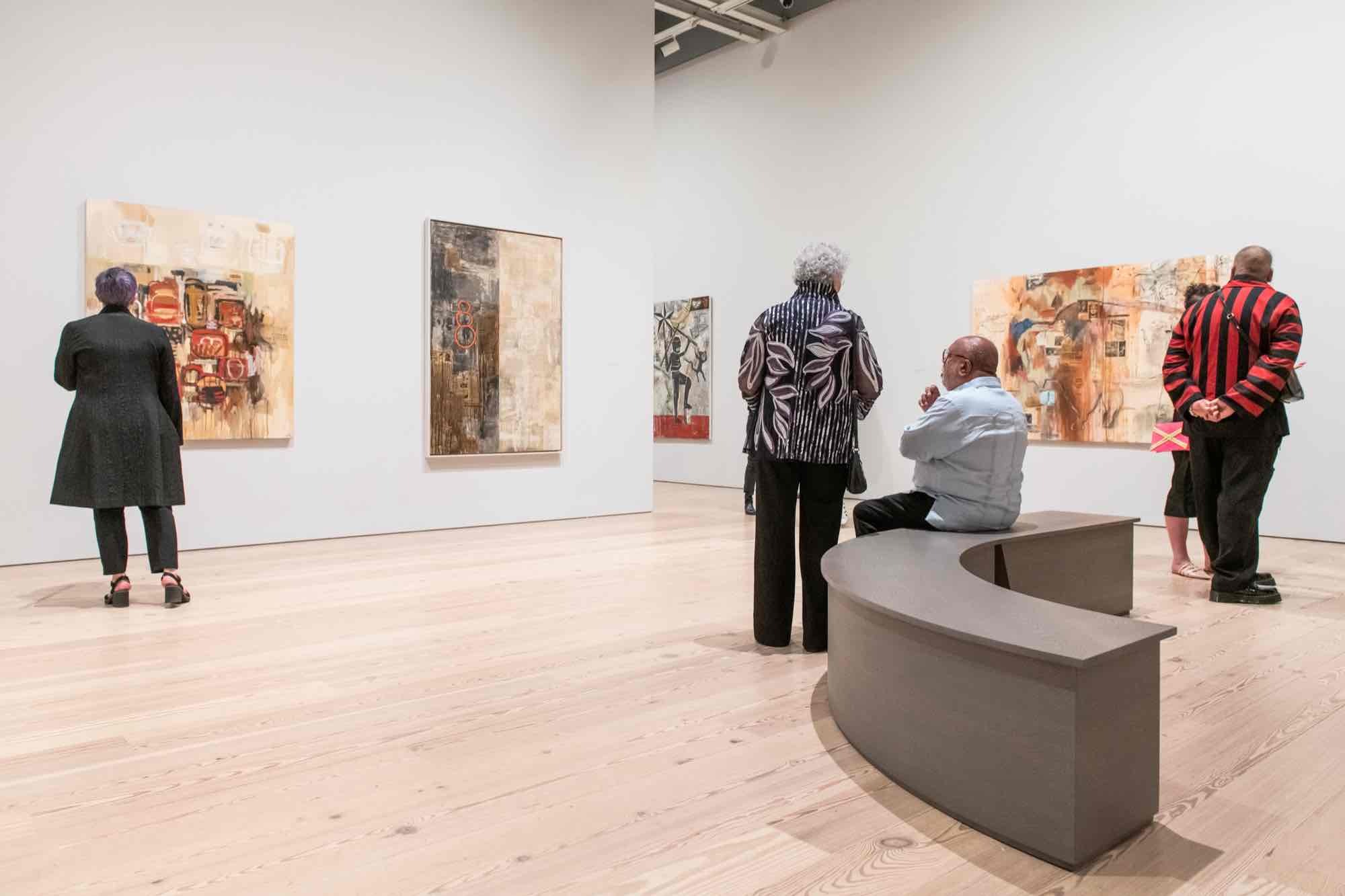
Installation view of Jaune Quick-to-See Smith: Memory Map (Whitney Museum of
American Art, New York, April 19–August 13, 2023). Left to right: The Vanishing
American, 1994; The Vanishing White Man, 1992; Imperialism, 2011; Indian Drawing Lesson (after Leonardo), 1993. Photograph by Matthew Carasella
American Art, New York, April 19–August 13, 2023). Left to right: The Vanishing
American, 1994; The Vanishing White Man, 1992; Imperialism, 2011; Indian Drawing Lesson (after Leonardo), 1993. Photograph by Matthew Carasella
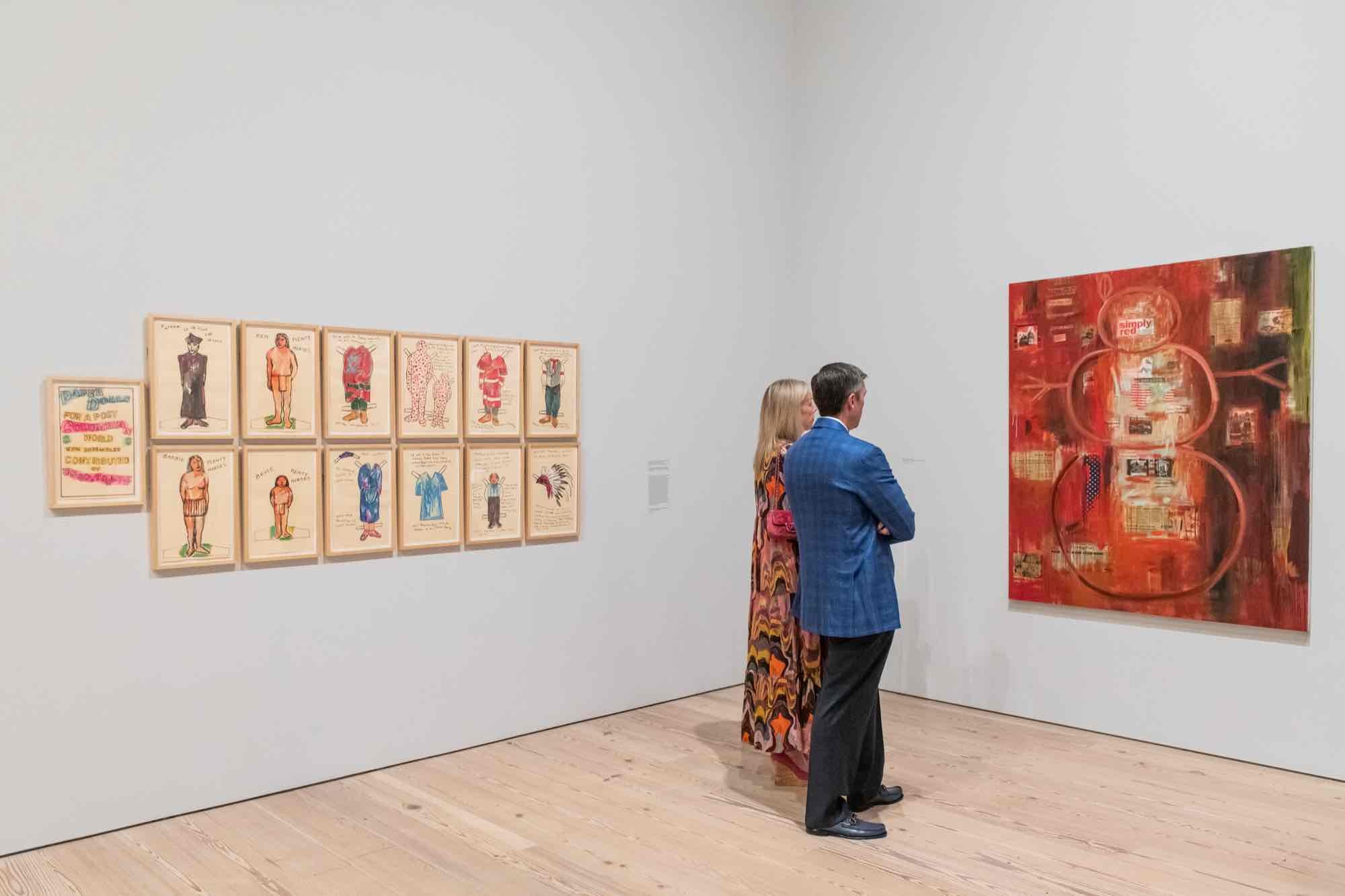
Installation view of Jaune Quick-to-See Smith: Memory Map (Whitney Museum of
American Art, New York, April 19–August 13, 2023). Left to right: Paper Dolls for a
Post-Columbian World with Ensembles Contributed by the US Government, 1991; I
See Red: Snowman, 1992. Photograph by Matthew Carasella
American Art, New York, April 19–August 13, 2023). Left to right: Paper Dolls for a
Post-Columbian World with Ensembles Contributed by the US Government, 1991; I
See Red: Snowman, 1992. Photograph by Matthew Carasella
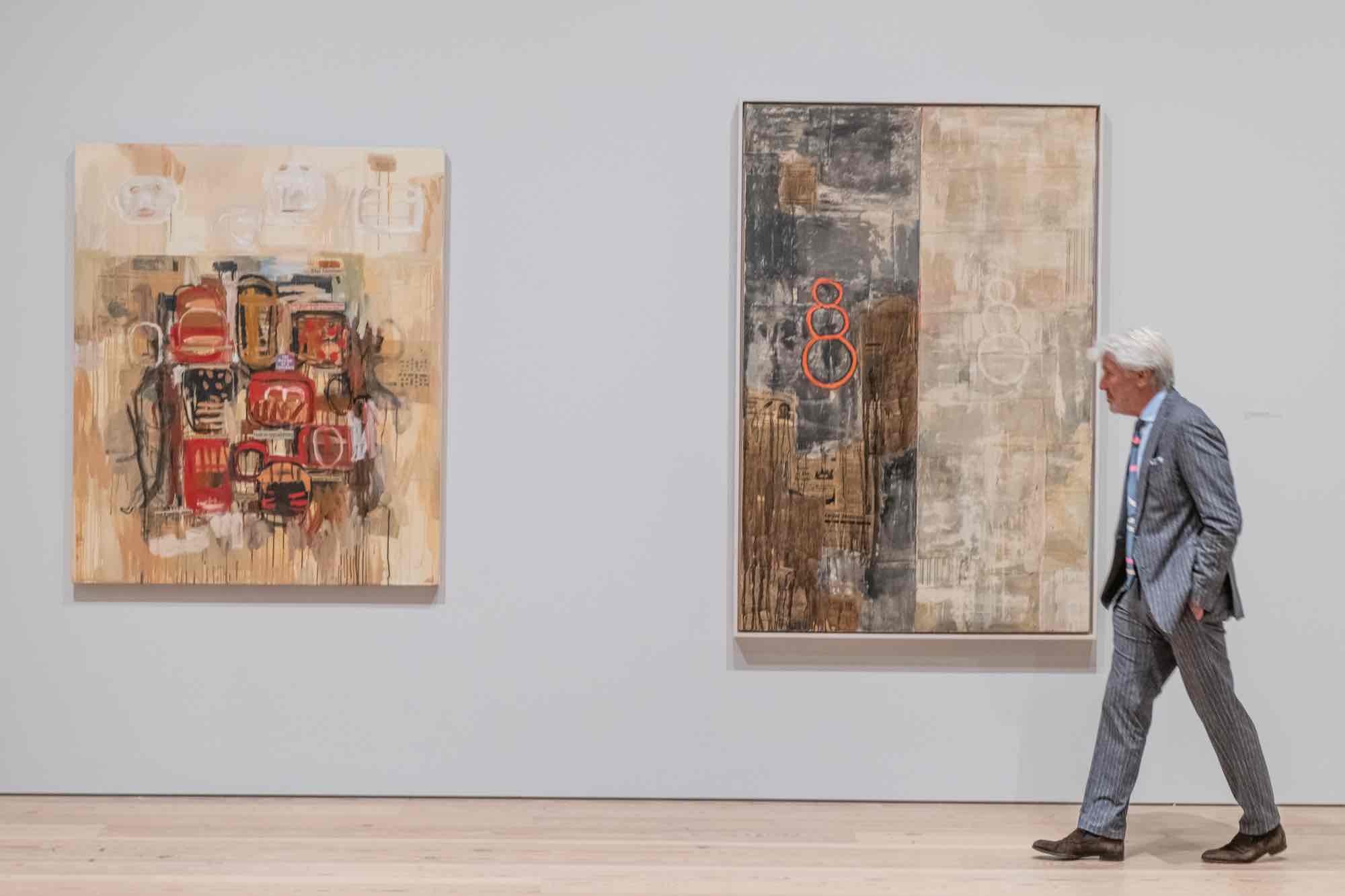
Installation view of Jaune Quick-to-See Smith: Memory Map (Whitney Museum of
American Art, New York, April 19–August 13, 2023). Left to right: The Vanishing
American, 1994; The Vanishing White Man, 1992. Photograph by Matthew Carasella
American Art, New York, April 19–August 13, 2023). Left to right: The Vanishing
American, 1994; The Vanishing White Man, 1992. Photograph by Matthew Carasella
This exhibition is the first New York retrospective of Jaune Quick-to-See Smith (b. 1940, citizen of the Confederated Salish and Kootenai Nation), an overdue but timely look at the work of a groundbreaking artist. Jaune Quick-to-See Smith: Memory Map brings together nearly five decades of Smith’s drawings, prints, paintings, and sculptures in the largest and most comprehensive showing of her career to date.
Smith’s work engages with contemporary modes of making, from her idiosyncratic adoption of abstraction to her reflections on American Pop art and neo-expressionism. These artistic traditions are incorporated and reimagined with concepts rooted in Smith’s own cultural practice, reflecting her belief that her “life’s work involves examining contemporary life in America and interpreting it through Native ideology.” Employing satire and humor, Smith’s art tells stories that flip commonly held conceptions of historical narratives and illuminate absurdities in the formation of dominant culture. Smith’s approach importantly blurs categories and questions why certain visual languages attain recognition, historical privilege, and value.
Across decades and mediums, Smith has deployed and reappropriated ideas of mapping, history, and environmentalism while incorporating personal and collective memories. The retrospective will offer new frameworks in which to consider contemporary Native American art and show how Smith has led and initiated some of the most pressing dialogues around land, racism, and cultural preservation—issues at the forefront of contemporary life and art today.
This exhibition is organized by Laura Phipps, Assistant Curator at the Whitney Museum of American Art, with Caitlin Chaisson, Curatorial Project Assistant.
Smith’s work engages with contemporary modes of making, from her idiosyncratic adoption of abstraction to her reflections on American Pop art and neo-expressionism. These artistic traditions are incorporated and reimagined with concepts rooted in Smith’s own cultural practice, reflecting her belief that her “life’s work involves examining contemporary life in America and interpreting it through Native ideology.” Employing satire and humor, Smith’s art tells stories that flip commonly held conceptions of historical narratives and illuminate absurdities in the formation of dominant culture. Smith’s approach importantly blurs categories and questions why certain visual languages attain recognition, historical privilege, and value.
Across decades and mediums, Smith has deployed and reappropriated ideas of mapping, history, and environmentalism while incorporating personal and collective memories. The retrospective will offer new frameworks in which to consider contemporary Native American art and show how Smith has led and initiated some of the most pressing dialogues around land, racism, and cultural preservation—issues at the forefront of contemporary life and art today.
This exhibition is organized by Laura Phipps, Assistant Curator at the Whitney Museum of American Art, with Caitlin Chaisson, Curatorial Project Assistant.
